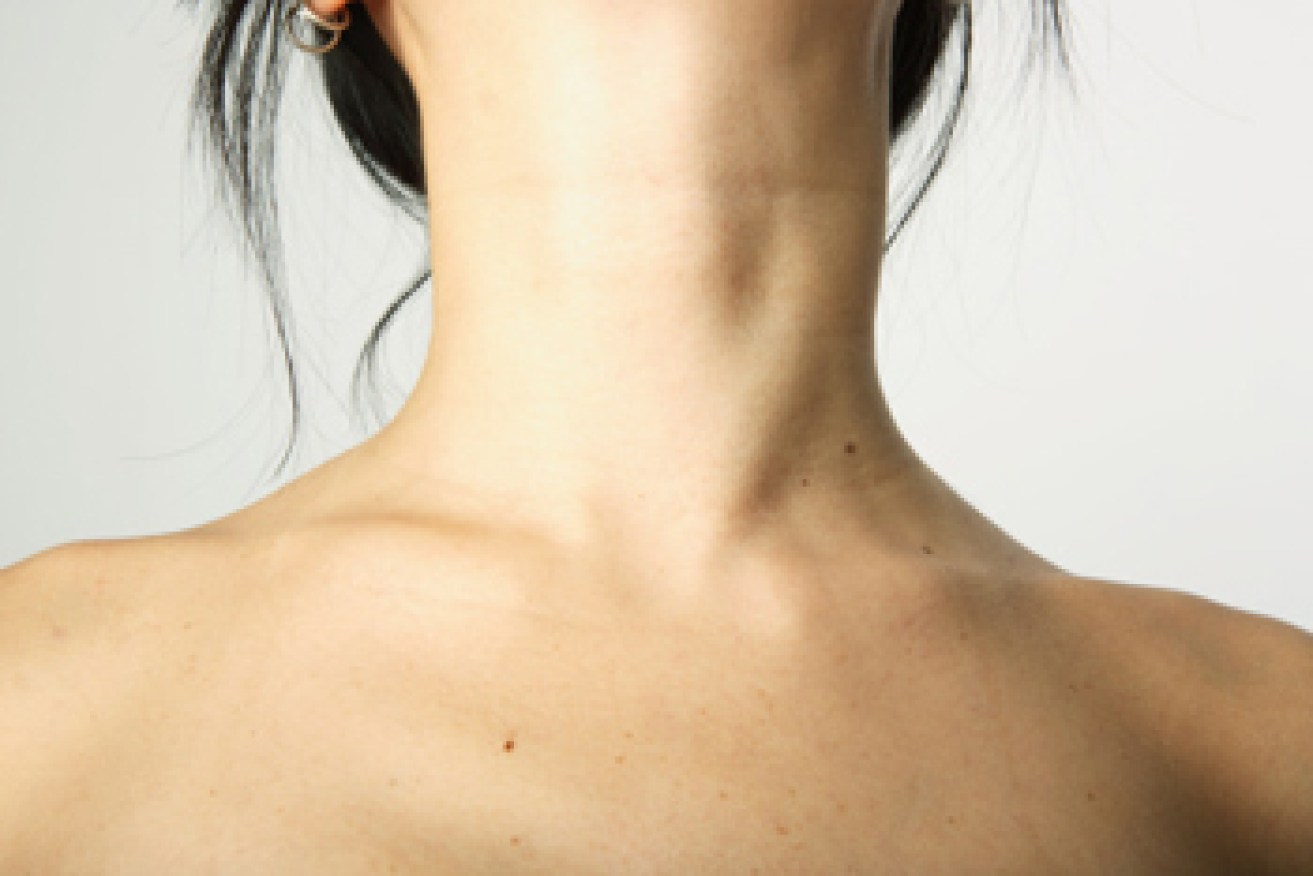Your body has a ‘dormant’ fat burner


Small brown fat deposits are found in modern humans around the collarbone and neck. Photo: Getty
Special brown fat deposits in our bodies control blood sugar and may help fight diabetes, according to Australian scientists.
In a recent study published in Cell Metabolism, researchers from the Garvan Institute of Medical Research reported that brown fat minimises fluctuations in blood glucose levels.
Brown fat in humans was only discovered in 2009, with deposits found just above the collarbone and in the neck. Unlike white fat, which is used by the body for energy storage, brown fat burns energy (sugar and fat) to produce heat and keep the body warm.
Lead researcher Dr Paul Lee, a diabetes and metabolism researcher, said this kind of fat acts as a “glucose buffer” and could be harnessed as a therapeutic tool to treat type 2 diabetes.
• Women need more sleep than men
• The only popular diet supplement worth buying
• The healthy benefits of the beloved beetroot
“Our findings indicate that brown fat might act as a ‘glucose buffer’, lessening the variation in blood glucose and potentially diminishing metabolic stresses that could increase the risk of diabetes,” Dr Lee said in a statement.
“Previously, we showed that individuals with large brown fat stores tend to be lean and have lower blood glucose – and now, we have uncovered a potential link between brown fat activity and blood glucose variations.

Dr Lee previously found that as little as 15 minutes in the cold may build brown fat. Photo: AAP
“If we can pinpoint what switches brown fat’s activity on and off during the day, we may identify new targets in drug design.”
The find is important because an estimated 1.7 million Australians have diabetes, with type 2 diabetes accounting for about 85 per cent of all cases. Type 2 diabetes is characterised by the pancreas’ reduced capacity to produce the hormone insulin, which regulates blood sugar levels.
Dr Lee’s team studied a group of 15 adults over a 12-hour period to track the relationship between brown fat activity and blood glucose concentrations. They found that participants with larger brown fat deposits had smaller blood glucose fluctuations.
Burning fat in the morning
The researchers also observed that brown fat activity increased at dawn around the time when the study’s participants were waking from sleep, which indicates it may be closely tied to the body’s circadian rhythm, or body clock.
“We speculate that this early-morning temperature boost may have an evolutionary origin, generating heat and preparing our ancestors for hunting and gathering in the cold as the day begins,” Dr Lee said.
The next step in the research would be to investigate how brown fat activation can be manipulated to regulate blood glucose levels with the aim of developing therapies for type 2 diabetes.

Small brown fat deposits are found in modern humans around the collarbone and neck. Photo: Getty
Previous studies in mice have shown that brown fat activity can reduce other complications associated with obesity, such as low insulin sensitivity and metabolic syndrome.
Activating brown fat
In recent years, scientists have worked feverishly to answer the burning question of whether or not brown fat activity is the key to weight loss and tackling obesity.
In a 2013 study, Japanese scientists reported that volunteers who sat in a cold room (19°C) for two hours a day for six weeks increased their brown fat activity and decreased their body fat mass.
The idea of a brown fat transplant is also being explored. This would involve taking fat precursor cells from a patient, growing them in the lab as brown fat and then transplanting them back into the patient’s body.
Another possible approach is to stimulate the conversion of white fat into brownish fat, or ‘beige’ fat, via increased melatonin consumption. Melatonin is the body’s sleep hormone and is also found in small quantities in natural foods like almonds, cherries, sunflower seeds, mustard and coriander.
In the meantime, Dr Lee said that a balanced diet and regular exercise were the “cornerstones of health metabolism” and warned they should not be forgotten.









